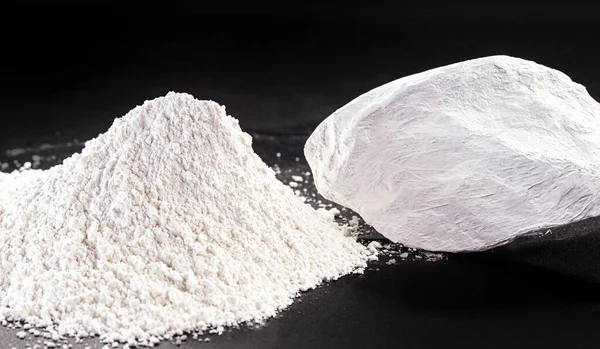Three Typical Processes and Applicable Objects of Powder Surface Modification

The surface modification process varies according to the surface modification method, equipment and powder preparation method. At present, the surface modification processes used in industry mainly include three categories: dry process, wet process, and composite process.
1. Dry process
This is the most widely used non-metallic mineral powder surface modification process. At present, for non-metallic mineral fillers and pigments, such as heavy calcium carbonate and light calcium carbonate, kaolin and calcined kaolin, talc, wollastonite, silica micropowder, glass microspheres, aluminum hydroxide and light magnesia, clay, ceramic pigments etc., most of them adopt dry surface modification process. The reason is that the dry method has the characteristics of simple process, flexible operation, low investment and good applicability of modifiers.
(1) Intermittent dry process
The characteristic is that the time of surface modification (that is, the residence time) can be flexibly adjusted in a wide range, but it is difficult to coat the particle surface modifier uniformly, the unit product consumes more chemicals, the production efficiency is low, and the labor intensity is high. Dust pollution, difficult to adapt to large-scale industrial production, generally used in small-scale production.
(2) Continuous modification process
It is characterized by better dispersion of powder and surface modifier, more uniform particle surface coating, less modifier consumption per unit product, low labor intensity, high production efficiency, and is suitable for large-scale industrial production. The continuous dry surface modification process is often placed after the dry powder preparation process to continuously produce various non-metallic mineral active powders in large quantities, especially for inorganic materials used in polymer-based composite materials such as plastics, rubber, and adhesives. Fillers and pigments.
2. Wet process
Compared with the dry process, it has the characteristics of good surface modifier dispersion and uniform surface coating, but it needs subsequent dehydration (filtration and drying) operations. It is generally used for water-soluble or hydrolyzable organic surface modifiers and occasions where the front stage is wet powder (including wet mechanical ultrafine pulverization and chemical powder) process and the latter stage needs to be dry, such as light calcium carbonate (especially It is the surface modification of nano calcium carbonate), wet finely ground heavy calcium carbonate, ultra-fine aluminum hydroxide and magnesium hydroxide, ultra-fine silicon dioxide, etc., because the slurry generated after the chemical reaction is not wet The method surface modification also needs to be filtered and dried, and the surface modified before filtering and drying can also prevent the material from forming hard agglomerates after drying and improve its dispersibility.
Inorganic precipitation coating modification is also a wet modification process. It includes pulping, hydrolysis, precipitation reaction and subsequent washing, dehydration, calcination or roasting and other procedures or processes.
3. Composite process
(1) Mechanochemistry/Chemical Coating Composite Modification Process
It is a process of adding a surface modifier during the action of mechanical force or fine grinding and ultrafine grinding, and chemically coating and modifying the surface of the particles while reducing the particle size of the powder. The characteristic of this composite surface modification process is that it can simplify the process, and some surface modifiers also have a certain degree of grinding aid effect, which can improve the crushing efficiency to a certain extent.
The disadvantage is that the temperature is not easy to control; in addition, since the particles are continuously pulverized during the modification process, a new surface is generated, and the particle coating is difficult to be uniform. It is necessary to design the addition method of the surface modifier to ensure uniform coating and higher In addition, if the heat dissipation of the crushing equipment is not good, the local excessive temperature rise during the strong mechanical force may decompose part of the surface modifier or destroy the molecular structure.
(2) Inorganic precipitation reaction/chemical coating composite modification process
After the precipitation reaction modification, the surface chemical coating modification is essentially an inorganic/organic composite modification process. This composite modification process has been widely used in the surface modification of composite titanium dioxide, that is, on the basis of precipitation coating SiO2 or Al2O3 film, titanate, silane and other organic surface modifiers are used to treat TiO2/SiO2 or Al2O3 The surface of composite particles is modified by organic coating.
(3) Physical coating/chemical coating composite modification process
The process of surface organic chemical modification after physical coating of particles, such as metal coating or coating.
